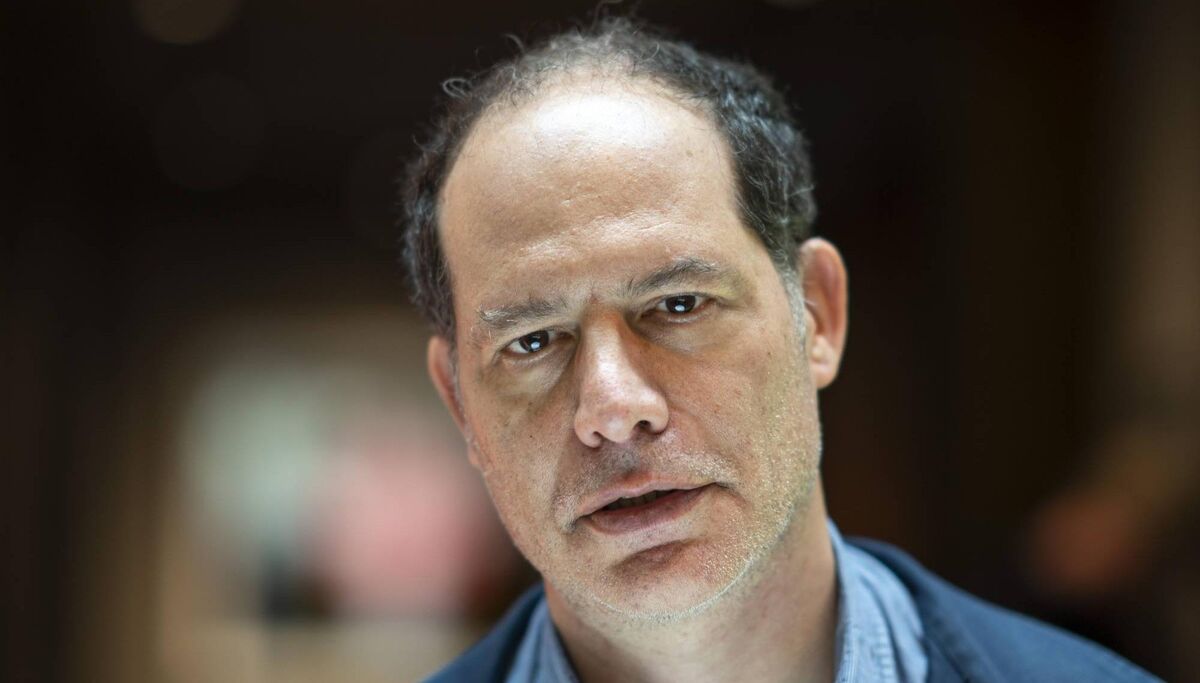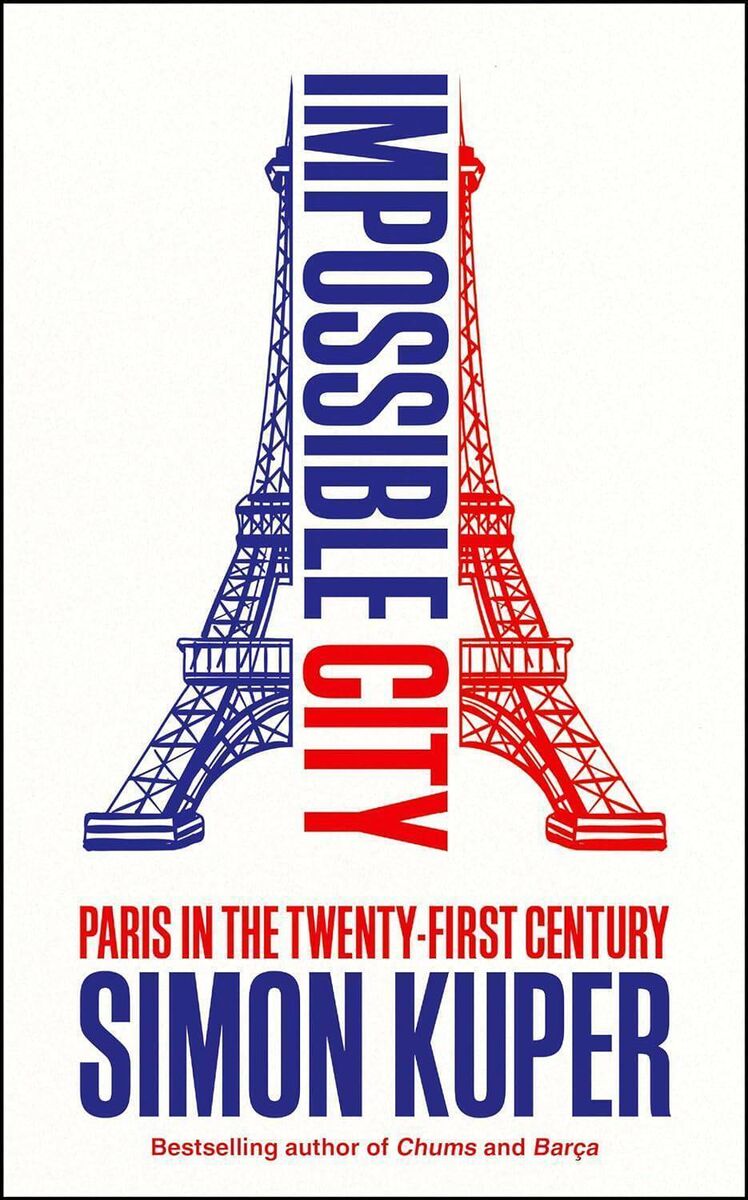First, some numbers. Paris inside the Périphérique — that is, the collection of arrondissements inside the 35km-long orbital road — is by some measure the most densely populated city in Europe with about 20,000 inhabitants per square kilometre.
While about a quarter of the population of central Paris live in social housing, the proportion of executives and members of the intellectual professions jumped from 25% in 1982 to 46% in 2013.
As a consequence, Simon Kuper argues in his new book, most members of the French elite “spend their entire adult lives in central Paris, ideally on the Left Bank, surrounded by chums from grandes écoles, and sometimes also shacked up with one, like Hollande and Royal”.
(He is referring to the former Socialist president, François Hollande, and former presidential candidate, Ségolenè Royal. The couple met at the prestigious École nationale d’administration and had four children together).
According to Kuper, this Parisian elite is “more inbred than its New York and London equivalents”. While those cities “function in the global language of English”, making them “more permeable for foreigners”, in Paris, where almost everyone has the same background, “groupthink becomes inevitable”.
This is the milieu which Emmanuel Macron first conquered and then emerged from to lead France, using an electoral strategy which united “two groups that differed chiefly in their fashion choices: Hipster centre-left bobos and unhip centre-right bourgeois.
Both groups had fenced themselves off in France’s prettiest urban neighbourhoods”.
In a high-tax country such as France, he writes, most elite members are not obsessed with wealth, but focus more on using their networks to get “power, cachet and perks — a chauffeured car, the use of a high-status Parisian space. Since these are often allocated outside the market, money isn’t even that useful.”
Kuper has many revealing factoids at his fingertips: In his 2017 campaign, Macron raised more money from globalism-embracing ex-pats in Britain than from people in France’s 10 largest provincial cities combined.
One upshot of all of this concentrated metropolitan elitism is that the lives of ordinary French people “feel determined, right down to the day they can retire, by a pretend Parisian meritocracy from which they were excluded at birth”.
 Simon Kuper provides several vivid and sympathetic sketches of life in outer Paris, in the more ethnically diverse, more impoverished, and sometimes troubled banlieues. File picture:David Levenson/Getty Images
Simon Kuper provides several vivid and sympathetic sketches of life in outer Paris, in the more ethnically diverse, more impoverished, and sometimes troubled banlieues. File picture:David Levenson/Getty Images
Kuper peers deep into life of the central arrondissements, an area packed so tight that it is “afflicted by permanent cabin fever”: Parisians spend their lives “trying to have private conversations in cafés while sitting six inches from the next table” or “trying to keep their toilet visits and orgasms silent”.
When lockdowns began, “almost every Parisian with access to a country home left town, in an exodus that echoed June 1940. Friends cocooned in Brittany posted pictures of themselves eating oysters alone on empty beaches. The Parisians left behind were disproportionately the poor, some of them locked up with multiple generations in tiny apartments”.
Kuper expertly dissects the code of behaviour by which Paris is governed, which covers everything from flirting to holidays, from food to parking. Parisians like to think of the code as identical with civilisation itself, though at the same time, part of the code is “to pretend that there isn’t a code”.
But even the code is not impervious to change. Kuper cannot help but observe that things have softened since his arrival at the turn of the century: Globalisation “eats away at all national particularities”.
He spies other changes too. There is a chapter devoted to one of the benign post-covid alterations to Paris — the increase in bicycle lanes — and he notes also phenomena such as the rise among the younger elites of success in tech entrepreneurship as life’s new first prize, thus displacing a career in the highest echelons of the state; the slimming down of the privileges doled out to the powerful following the gilets jaunes protests; and the shift in property-owning patterns in certain quartiers from gentrification to plutocratisation — “a takeover by the global one percent”.
The battle now is to equip Paris with enough affordable rental apartments. There is a plan called ‘Grand Paris’, initiated by Nicolas Sarkozy, aimed at uniting Paris and its suburbs into one city.
Some of this will be on display when the Olympics roll by: The athletes’ village is outside the ‘Periph’. Kuper provides several vivid and sympathetic sketches of life in outer Paris, in the more ethnically diverse, more impoverished, and sometimes troubled banlieues.
He even travels as far afield as Calais, to ‘The Jungle’, where he meets men from “the world’s most cursed nationalities”, all desperate to escape France “with its impenetrable language and bureaucracy” for England.
Kuper is an accomplished dripper of acid across the scenes he describes.
He is very funny, for example, when contrasting the friendliness found in English primary schools and the froideur encountered in the French equivalents. And he is prepared to venture into some of the city’s darkest corners.
This is most notable when he confronts the revelations of paedophilia and other sex crimes among the post-1968 elite for whom the revolutionary slogan ‘It is forbidden to forbid’ became the cue for satisfying their every desire with impunity.
It is shocking to have it all laid out in one place: The 1977 petition defending sex between adults and children published in , signed by Sartre, de Beauvoir, Barthes, and others; the prize-winning book by Frédéric Mitterrand, the late president’s nephew, about his touristic life in search of paid-for sex with young boys (which did nothing to prevent him from rising to become minister of culture); the assaults on women carried out by Dominque Strauss-Kahn, managing director of the IMF; and the memoirs which finally blew the doors open on incest and paedophilia in high places, including that of Vanessa Springora, whose abuser Gabriel Matzneff’s “almost identical, barely fictionalised accounts of his love affairs with pubescent girls and boys” in France and the Philippines had been published by Gallimard. (Incredibly, Springora’s mother permitted the relationship).

It is a sordid procession, made all the worse because so much was nodded through by secret-keeping insiders in the joint media-politics-arts establishment.
Kuper lives and works close to the sites of both the Charlie Hebdo and Bataclan massacres and addresses both in his book.
One of his conclusions is that, “at different times and in different neighbourhoods”, Paris is both the jihadi hellhole depicted by the right and the multicultural paradise depicted by the left.
It is also a city “full of poor people of Muslim origin who wouldn’t dream of shooting anyone”, who just dream of better jobs, thus providing some welcome insider perspective.
At the same time, I felt the book falter slightly in dealing with these events, as if Kuper preferred not to work his way back into them and what they meant, but wanted instead to find a way around them with wholesome anecdotes and relativisations.
At one point, he suggests that attacks were — like the pursuit of success in football, basketball, or drug dealing — expressions of ambition from the banlieues. (It’s partly a joke, I suppose, but a very poor one.)
Ultimately, Simon Kuper does a great job in conveying why Paris is a city that is impossible to embrace and impossible to resist.
As you watch how the Olympics and the politics of France unfold over the coming weeks and months, keep Kuper’s book by your side. It will explain a lot.









